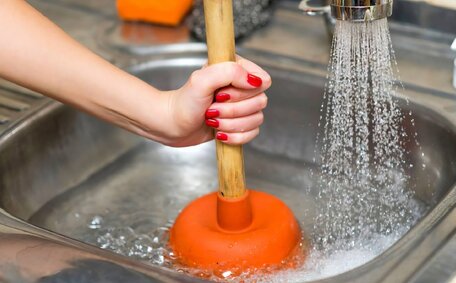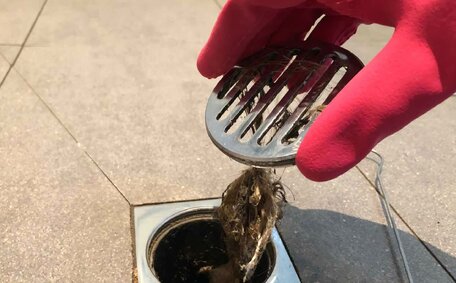What is Sewer Pipe Relining?
Sewer pipe relining is a trenchless method of repairing damaged sewer pipes without the need for full pipe replacement. It involves inserting a resin-saturated liner into the existing pipe then curing it to form a smooth, jointless new interior pipe surface.
The relining process begins with an inspection of the sewer line using a camera to identify any breaks, cracks, root intrusion or other damage. Once the issue is identified, a flexible sleeve or liner coated with epoxy resin is inserted through an access point and guided through the pipe. The liner is inflated against the old pipe walls and the resin is cured using hot water, steam, or UV light to harden.
This essentially creates a “pipe within a pipe” with a structurally sound, water-tight new inner sewer pipe.
Sewer pipe relining is a cost-effective and efficient alternative to excavating and replacing the damaged line. It restores flow capacity, prevents leaks and infiltration, and extends the life of ageing pipes without the major disruption of digging up the pipe.
Why Sewer Pipes Need Repair or Replacement
There are several common reasons why sewer pipes may require repair or replacement:
Pipe Failures and Blockages
Over time, sewer pipes can develop cracks, breaks, dislodged joints, and blockages due to:
- Pipe corrosion and material deterioration
- Settling or shifting ground
- High pressure flows
- Tree root intrusion
This can lead to sewage backups into the property, slow drains, gurgling sounds, and foul odours. Pipe problems will only worsen without repair, and can result in total sewer line failure.
Groundwater Infiltration
Cracks and defects in the sewer pipe can allow groundwater and soil to seep in. This infiltrating water takes up capacity in the sewer line, leading to surcharging, overflows, and basement backups. Excess stormwater inflow can also overtax sewer lines.
Undersized Pipes
Older homes may have sewer pipes that are too small to handle the capacity required by modern households and fixtures. This is another common cause of drain backups and overflows.
Why Replacement is Sometimes Necessary
In severe cases where pipes are badly damaged or fully obstructed, relining may no longer be an option. Full sewer line replacement by excavation and installing new piping may be the only viable solution. Replacement may also be preferable when updating old piping to meet current building codes.
For minor to moderate pipe issues, trenchless relining can often restore a sewer pipe without the major undertaking of replacement. But for completely deteriorated pipes, replacement is the recommended solution.
Damage from Tree Roots
Tree roots are one of the most common causes of damage and blockages in sewer pipes. As trees grow, their roots extend seeking water and nutrients. Older clay or concrete sewer pipes can provide an entry point for tree roots.
Once inside the pipe, the roots continue growing, expanding and thickening over time. This leads to cracked and broken pipes, displaced joints and misaligned sections. Thick root masses can cause major blockages and back-ups.
Untreated root intrusion will only get worse. Root growth can completely choke sewer flows, cause sewage overflows into your home and yard, and lead to extensive and expensive repairs. Major excavation work may ultimately be needed to replace fully damaged sections of pipe.
To prevent major headaches, it’s critical to address root intrusion through pipe relining or removal of problem trees. An experienced plumber can inspect the pipes using CCTV to identify any root issues and advise on the best solution. Don’t ignore sewer pipe root problems before they become severe and hazardous.
Pipe Corrosion and Cracks
Sewer pipes are susceptible to corrosion and cracking over time. This can lead to catastrophic pipe failures if left unchecked.
Corrosion occurs when sewer gases or substances flowing through the pipe slowly eat away at the material. Cracks form when pipes settle, shift, bend under pressure, or endure impact damage. Older pipes are especially vulnerable.
As corrosion and cracks worsen, pipe integrity becomes compromised. As corrosion and cracks worsen, pipe integrity becomes compromised. As corrosion and cracks worsen, pipe integrity becomes compromised.
Whole pipe sections may eventually collapse.
Catching and repairing corrosion and cracks early is crucial. We use CCTV inspections to identify problem areas before they turn into pipe failures. Strategic spot repairs or full pipe relining can then renew the sewer line.
Don’t wait until you have a sewer emergency. Regular maintenance checks and early intervention for corrosion and cracks helps avoid disastrous pipe collapses down the road.
How Sewer Pipe Relining Works
The process of sewer pipe relining involves several key steps:
- Pre-lining inspection - A camera inspection is done to assess damage and determine if the pipe is a candidate for relining. Measurements are taken to custom-fit the liner.
- Site preparation - The pipe access point is excavated and bypass pumping equipment installed if necessary.
- Liner installation - The felt or epoxy liner coated with resin is inserted through the access point and fed through the pipe.
- Liner inflation - The liner is inflated against the pipe walls using air or water pressure to ensure complete contact.
- Curing - Hot water, steam, UV light, or ambient temperature is used to cure and harden the resin into a smooth, jointless pipe lining.
- Service reconnection - Once cured, the liner surface is drilled or cut to reconnect service lines if needed.
- Final testing - CCTV inspection and pressure testing ensures proper installation and flow capacity.
Sewer pipe relining restores structural stability and water-tightness without digging or pipe replacement. The process is efficient, minimally invasive, and preserves the surrounding infrastructure.
The Cured-in-Place Pipe Lining Process
Cured-in-place pipe (CIPP) lining is a popular trenchless method for rehabilitating damaged sewer pipes. Here’s an overview of how it works:
- A felt tube or epoxy resin-saturated liner is fabricated to match the diameter and length of the damaged pipe.
- The liner is winched into the host pipe through an access point like a manhole.
- The liner is inflated with air or water so it fully contacts the inner pipe walls.
- Hot water, steam, UV light or ambient temperature cures the resin, hardening the liner.
- Service connections are reinstated by drilling or cutting into the liner.
- The result is a new jointless pipe-within-a-pipe with high structural integrity.
CIPP liners are flexible yet strong. They can stretch around bends and corners, providing a tight seal. Since no trenches or excavation is required, it’s highly cost-effective compared to replacement.
CIPP lining restores pipe flow capacity and strength. It prevents further corrosion and infiltration for decades. Overall, it’s an efficient and long-lasting sewer repair method.
Benefits of Trenchless Sewer Repair
Trenchless sewer repair offers many benefits compared to traditional open-cut sewer line replacement:
- Less invasive – No need to dig up yards, driveways or streets to access pipes.
- Faster – Pipe relining takes days not weeks, reducing disruption.
- Cleaner – Little to no demolition mess or debris to clear up.
- Cost-effective – Up to 50% cheaper than excavation and replacement.
- Durable – Lined pipes last as long as new piping.
- Maintains landscaping – No destruction of lawns, gardens or land features.
- Preserves infrastructure – Sidewalks, roads and other structures remain intact.
- Reduced risk – Minimises chances of environmental contamination from sewage spills.
- Improved flow – Smooth interior walls increase drainage capacity.
Trenchless sewer renewal restores pipes in-place with minimal surface impact. For residential or commercial buildings, it’s often the superior choice over traditional open-cut replacement methods.
Cost Comparison to Replacement
Sewer pipe relining typically costs $4,000 to $15,000, depending on factors like:
- Pipe length and diameter
- Pipe material and amount of damage
- Accessibility to pipes
- Location and external conditions
In contrast, sewer line replacement costs $8,000 to $20,000 on average. Excavation expenses, surface and landscaping restoration, and greater labour and equipment contribute to replacement being 50-100% more expensive than relining.
For a like-for-like comparison, a 50 metre run of 150mm diameter damaged concrete pipe could be:
- Relined for around $7,500
- Fully replaced for $15,000
While exact costs differ case by case, sewer relining provides massive cost savings over replacement. It also minimises disruption and restores pipes in a fraction of the time.
When to Choose Relining Over Replacement
p>p>p>p>p>
What to Expect During the Relining Process
p>p>p>p>p>p>
Conclusion
In summary, sewer pipe relining is an effective trenchless method to repair damaged or deteriorating sewer pipes. It involves inserting a resin-saturated liner into the existing pipe and curing it to form a new interior pipe surface. Relining is significantly less invasive, faster, and more cost-effective than full pipe replacement excavation.
Sewer pipes often need repair due to ageing infrastructure, pipe corrosion and cracking, root intrusion, blockages from buildup, and undersized pipes in older homes. Damaged pipes can lead to backups, overflows, foul odours, and even collapse. Early intervention with strategic repairs or full relining helps avoid emergency pipe failures.
The expert plumbers at Strathfield Plumbing can assess your sewer pipes using CCTV inspections. We can advise on the best repair approach, whether spot repairs, full pipe relining, or replacement if damage is too severe. With over 25 years of experience, we are specialists in trenchless sewer pipe solutions.
To learn more about your relining options or schedule an inspection, email [email protected], call 1300 349 338, or book online at www.strathfieldplumbing.com.au. Contact Strathfield Plumbing today to understand the condition of your pipes and plan ahead.





